
The name “Triplite” sounds like triple, and that makes sense because this rare orange gemstone cleaves or breaks in three different directions, forming at sharp right angles within the stone. This tripling-action within the formation of the stone makes it brittle, presenting a challenge for even master gem-cutters to facet without literally fracturing the stone while cutting.
Although Triplite was first discovered and recorded in France in 1813, the reason you may not have ever seen it or heard of it is because it is a temperamental diva of a precious gemstone!
This lack of knowledge has led to some recent surprises. In 2006, a Denver-based gem and mineral dealer named Morgan Sonsthagen noticed a big, rough rock holding down a stack of papers at the Tucson Gem and Mineral Show.
When Sonsthagen inquired about the price of the rock, attracted to its bright orange-pink color even in its uncut state, the booth-vendor wasn’t interested in selling. Because, he explained, he needed something to hold that stack of papers down.
Sonsthagen found the vendor another paperweight, and purchased the 150-gram rock. It turned out to be a rare Triplite, in the most treasured hue. After being cut in Bangkok, the rough rock yielded a 21.29 carat pear shape, and 11.05 carat round cut, and several smaller stones.
Triplite of this quality is so rare that The Smithsonian National Museum of National History has only one specimen in its world-class correction, made as a gift to the Museum in 2008.
Good news: we now have Triplite, ready to be set into High Jewelry!

The majority of gem-quality Triplite is found in Pakistan, Uzbekistan and China. However, the gem is sometimes also found in France, Germany, Finland, Namibia and the USA. Most Triplite isn’t this delicious, transparent, tropical orange—it’s usually dark red or brown, opaque, and not too interesting. Triplite also has been found in opaque black, rounding out the Triplite color spectrum that may make you think of Halloween!
But color is our passion, and it’s our mission to seek out the rare and exquisite for our customers.
When cut properly, a transparent Triplite is distinctly pleochroic, meaning that it displays a few colors at once as the stone is turned and light enters from different angles. Often, a bright, hot pink note is present in a tangerine-colored faceted Triplite.
Triplite is fairly soft in terms of the Mohs Hardness Scale, registering at a 5.0 – 5.5 (remember that the Diamond, the hardest known substance on earth, is a 10 on this scale). This comparative softness also contributes to making the stone difficult to facet successfully.
We’d love to consult with you about creating a unique piece of High Jewelry with a rare Triplite center-stage: perhaps as a pendant, or as the primary stone in a necklace of corresponding gems, like Orange and Pink Tourmalines or Spinels.
The Orange Zone
Orange is a color that stirs strong emotions.
Many people simply don’t like it, perhaps because it was common in the autumnal home décor color-scheme of the 1970s: avocado green, harvest gold, and pumpkin-spice orange.
Or perhaps the people who don’t like orange are responding to ancient signaling in the human brain.
Your Orange Message
Orange as a color is high-visibility. Being a mix of red and yellow, it carries some of the urgency of emergency-red. Orange is the color of safety-wear worn by people working in dangerous settings, such as freeway repair and construction. It’s also the color of the garments issued to prisoners by many correctional institutions, used an immediate signal that the wearer is to be watched closely.
In nature, orange, along with bright red and yellow, is a danger sign. Typically, the presence of orange in the skin or scales of a frog, salamander or snake is a clear warning that the animal contains neurotoxins with may be deadly.
The species of tiny rain-forest frogs which have been used for Millennia as the source for blow-dart poison advertise their toxicity through brilliant orange-and-black markings of their skin.
Similarly, the Monarch butterfly warns would-be predators of its nasty taste by its beautiful orange-and-black markings. In these cases, the reasoning is that the animal simply would rather not be eaten!
Over millions of years, following the successful example if the Monarch, Viceroy butterfly has developed the orange wing-color and black markings which make it almost identical to the Monarch, although it is a different Genus. Nevertheless, the alarming orange-and-black combo prevents hungry birds and reptiles from seeing the insect as a favorite meal.
Orange: The New Black?
We love it because it is indeed unusual. In the ancient cosmology of the Chakras, orange designates the second Chakra, resting in the cradle of the pelvic bones. Seated above the first Chakra, signaled by the color red, the orange Chakra is the seat of creative and procreative energy. Sexual drive and creativity are led by this vibrant, warm color, so it’s a natural choice for anyone seeking to connect with these primal forces.
According to Jessica Stewart, a historian, art curator and writer for My Modern Met, the color orange did not even have a proper name in English until the 16th century.
The color was already familiar and well-loved in Asia, where marigold-colored turmeric powder was used as a dye for Buddhist robes, and saffron, a bright orange flavoring and dye collected from the stamens of the crocus flower, were more precious than gold.
When Portuguese merchant brought the first orange trees from Asia to Europe, Europeans created new words to describe the color of the ripe, round fruit. Linguists theorize that the various names for this color are derived from Tamil, Telugu and Sanskrit names for the fruit, which then found their way into Arabic and Persian dialects. We can trace this path from a root name like “naranga” (Sanskrit for “orange tree”) to “orange”, and even variants on “arancia” in Latinate languages simply by dropping the initial “n”sound.
Michelle Neff, instructor at Michigan State University, offers her course called “Real Colors”, focused on how to assess the personality and temperament of others, identified by these characteristics into color-designations.
Of the people who identify with orange, Neff writes:
“Those with Orange color personality strengths tend to be witty, spontaneous, generous, optimistic, eager and bold. The need fun, variety, stimulation and excitement. Freedom to act is also important to an Orange.
Oranges have energy and like to bounce around to different projects or tasks. They are also good at overcoming barriers in their work and are out-of-box thinkers. Oranges need flexibility in choosing how tasks are completed.
When working with Oranges, it is important to challenge their imagination and celebrate their successes, especially if taking risks is part of it.”
Is orange really the new black?
Not likely. It’s too bold.
But here’s more good news: fashion pundits now agree that even redheads—including gingers with freckles—can look great in orange.
For many decades, fashion editors maintained that orange was off-limits to those with auburn hair, but it’s now understood that such barriers are simply silly.
Wearing orange is indeed like setting a spark to a fuse. It’s exciting. It’s risky. It’s off the beaten path.
We dare you.

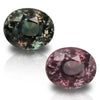 Alexandrite
Alexandrite Amethyst
Amethyst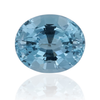 Aquamarine
Aquamarine Chrysoberyl
Chrysoberyl Demantoid
Demantoid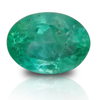 Emerald
Emerald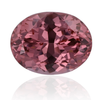 Garnet
Garnet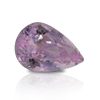 Kunzite
Kunzite Paraiba
Paraiba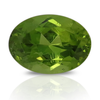 Peridot
Peridot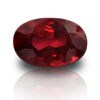 Ruby
Ruby Sapphire
Sapphire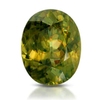 Sphene
Sphene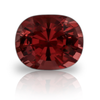 Spinel
Spinel Tanzanite
Tanzanite Topaz
Topaz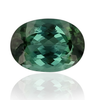 Tourmaline
Tourmaline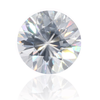 Zircon
Zircon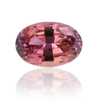 Zoisite
Zoisite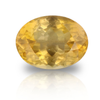 Rare Gemstones
Rare Gemstones Heart Shape
Heart Shape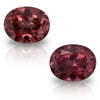 Matched Duo
Matched Duo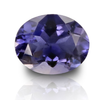 Everyday Candy
Everyday Candy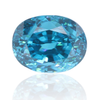 Insta Therapy
Insta Therapy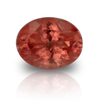 Mini-Splurge
Mini-Splurge